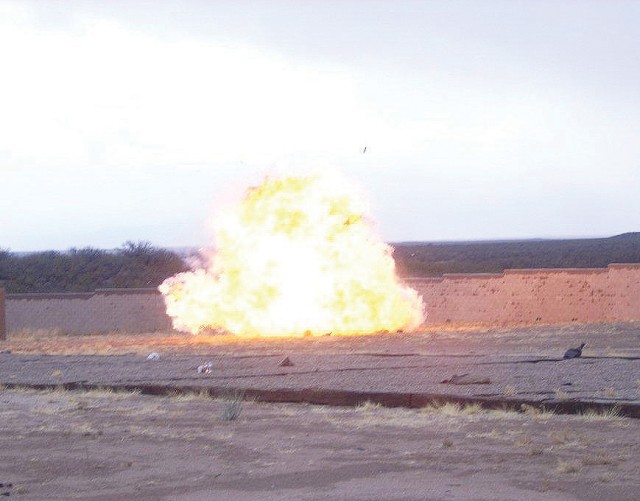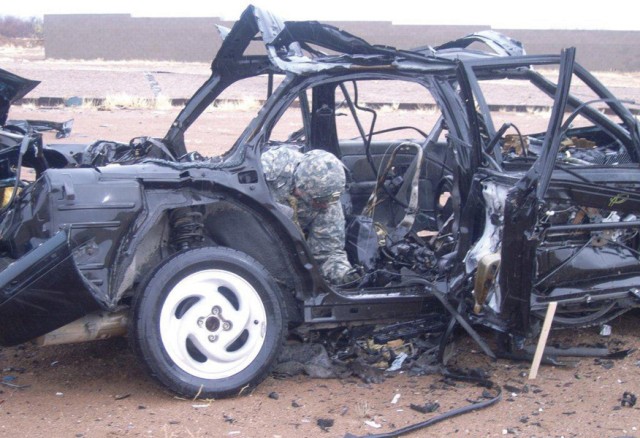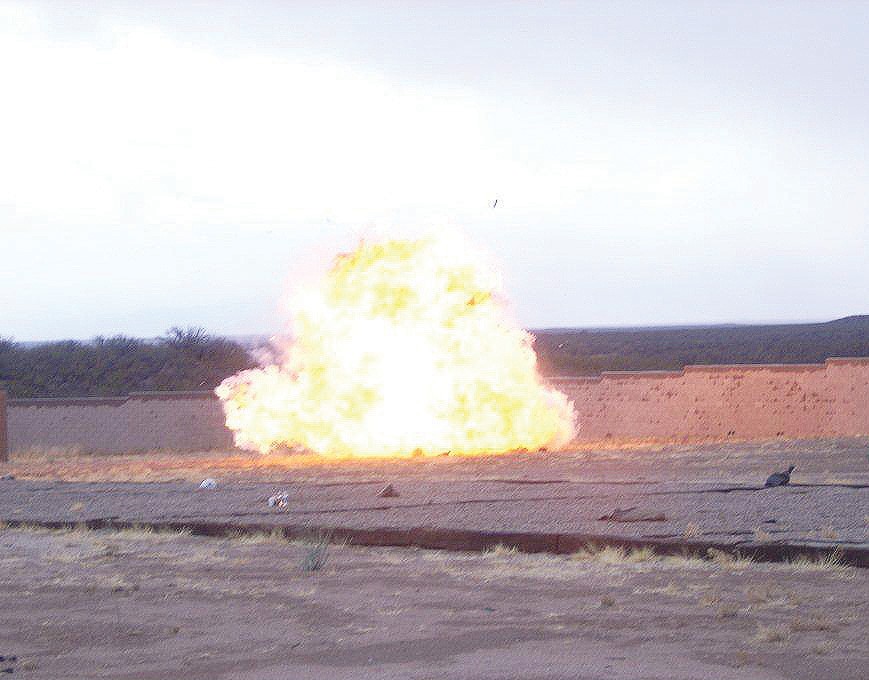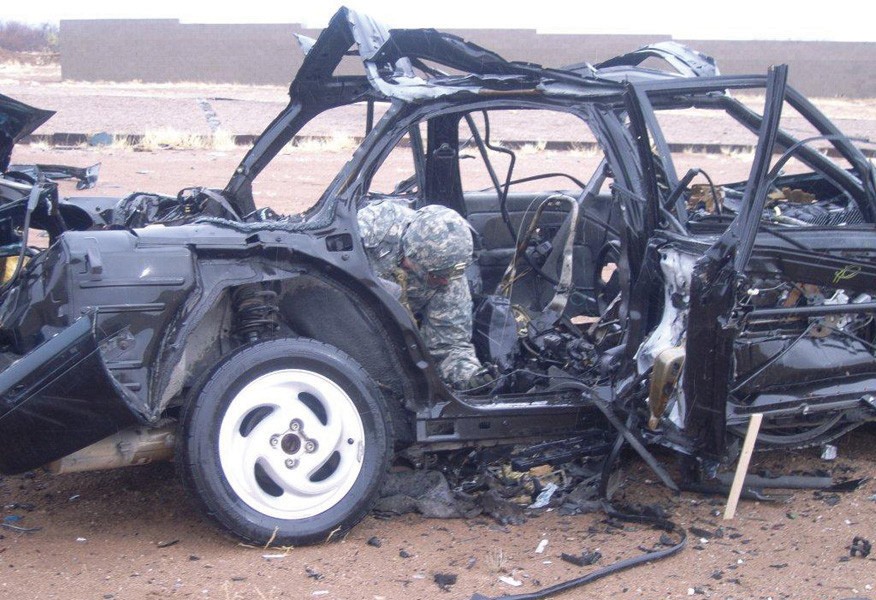FORT HUACHUCA, Ariz. -- A course fairly new to Fort Huachuca is designed to teach Soldiers to investigate the aftermaths of improvised incendiary devices and is designed to give Soldiers skills beneficial to units on the battlefield.
The Weapons Intelligence Course is an additional skill identifier producing course designed to prepare deploying weapons intelligence teams and other joint warfighters to support brigade combat teams, regimental combat teams and other supported elements as directed. The ASI was approved on Feb. 1. Readers can compare weapons intelligence teams to crime scene investigative units in combat.
WIC course number, 9E-F27/950-F12(G), in the Army Training Requirements and Resources System, is a seven-week course. The primary focus of the instruction is to attack the network and get left of the explosion.
The first weapons intelligence teams trained at Fort Gordon, Ga. They were mostly made up of volunteers from throughout the U.S. Army. It was mainly linguists who performed this function on the first iteration in theater in 2004. The majority of training received was from prior members of the British Weapons Intelligence Service teams that implemented the skill sets taught in Northern Ireland during their clashes with the IRA.
After two iterations of training, the course was moved to Aberdeen Proving Grounds, Md. It was taught for four years on a rotational basis until moving to its current home, here on Fort Huachuca.
The first pilot course at Fort Huachuca was conducted from November to December 2008 in order to prepare designated U.S. Air Force and U.S. Navy warfighters to conduct the WIT mission in Operation Iraqi Freedom.
On March 24, 2010 General Martin Dempsey, Training and Doctrine Command, approved a weapons intelligence team COA requiring that weapons intelligence teams be task organized from brigade assets with up to three, three-Soldier teams per brigade. The weapons intelligence course counters high priority threat tactics and weapons systems, and defeats the enemy use of these weapons and tactics.
The WIC owns two training ranges here, and these are used to conduct explosive effects demonstrations, incendiary site exploitation, blast seat analysis, and live explosives training. These are the only two active demolitions ranges on Fort Huachuca. Instructors hope students leave the range with a much greater appreciation for what the U.S. military faces in the current conflict.
The WIC also certifies students as subject matter experts regarding site exploitation, and they are often used in that capacity during their deployments. During the course, students go through a field training exercise. The FTX is a three-day event. Each weapons intelligence team is on-call during the FTX and responds to at least nine different scenarios. This capstone exercise requires the students to apply everything they have learned in the course in a realistic tactical environment and helps prepare them for the end of course evaluations, which certify them as fully trained and capable WIT members.
To date, 445 joint warfighters have been trained at Fort Huachuca in weapons intelligence that instructors consider progressive, sequential, and relevant. WIC graduates earn 18 semester hours credit through Cochise College in Terrorism and Counter Terrorism, Field Experience in Administration and Justice, Criminal Investigation, Applied Technical Writing, Electronics Foundations, and Cellular Communications Fundamentals.
The Weapons Intelligence Course provides tactical commanders with a dedicated weapons technical intelligence capability in order to provide supported tactical commanders complete dominance of their area of responsibility.
The next scheduled Weapons Intelligence Course is April 4-May 20.
For more information, contact: Staff Sgt. Colby Hover, 533-0694, colby.hover@conus.army.mil or Doug Brittain, 533-6628 douglas.j.brittain@conus.army.mil.




Social Sharing